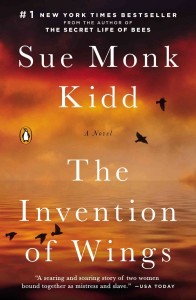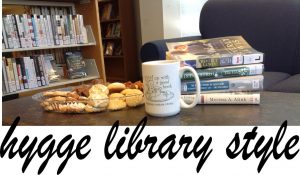
Have you ever gotten so excited to see a new book you’ve been dying to get your hands on that you forget to watch where you are going and walk into a pole? No? Ok, well then we’ll assume that’s just me.
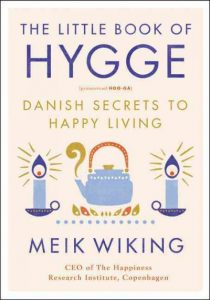 In case you’re curious, the book I was recently so distracted by is The Little Book of Hygge by Meik Wiking. To keep up the appearance of professionalism, we’ll pretend the only reason I was so eager to see the book was so that I could share the information it contains with you, our faithful blog readers. And indeed, it has been a great help as I plan the remaining posts in the Hygge Library Style series. This little hygge treasure trove was written by Meik Wiking, a Dane and the CEO of the Happiness Research Institute (how’s that for a job?) in Copenhagen. Consistent with his professional goal of sharing the secrets of happiness with the world, Wiking’s book is a how-to-guide for those of us who have the misfortune of living outside of the world happiness headquarters. The Little Book of Hygge contains definitions, a hygge dictionary, plenty of lists, tips and recipes to help you get started.
In case you’re curious, the book I was recently so distracted by is The Little Book of Hygge by Meik Wiking. To keep up the appearance of professionalism, we’ll pretend the only reason I was so eager to see the book was so that I could share the information it contains with you, our faithful blog readers. And indeed, it has been a great help as I plan the remaining posts in the Hygge Library Style series. This little hygge treasure trove was written by Meik Wiking, a Dane and the CEO of the Happiness Research Institute (how’s that for a job?) in Copenhagen. Consistent with his professional goal of sharing the secrets of happiness with the world, Wiking’s book is a how-to-guide for those of us who have the misfortune of living outside of the world happiness headquarters. The Little Book of Hygge contains definitions, a hygge dictionary, plenty of lists, tips and recipes to help you get started.
I was pleased to see that I was right on target when I urged our readers to write letters when they are in hyggehjornet (in the mood for hygge). Both writing and reading letters earn a spot in Wiking’s “Hygge Emergency Kit.” Also on that list are your favorite tea, your favorite book, your favorite TV series and some great music. And naturally, the library is here to help you discover just the right book, TV, music and tea selections for your personalized kit. If you’re puzzled as to how the library will help you discover your favorite tea, you must have missed the West Branch’s Literatea program. No worries, though, there’s another one next week.
One thing that does give me pause in regards to the the hygge hype, which I have clearly enthusiastically embraced, is the criticism that hygge has really just been appropriated by non-Danish countries to sell people things they don’t really need. A British writer has leveled that charge and others in this article, which I offer as a way in order to balance my personal hygge bias.
The consumerist charge is one that gives me pause, since the library is definitively not about selling you things. And the criticism is also not without merit, since many retailers have co-opted hygge in their advertising. Wiking, however, slaps down the idea that hygge can or should be bought. He says, “Hygge is about appreciating the simple things in life and can be achieved on a shoestring budget.” In fact, he goes on to assert that, “The more money and prestige is associated with something, the less hyggeligt [hygge-like] it becomes. The simple and more primitive an activity is, the more hyggeligt it is.” Whew. That’s a relief.
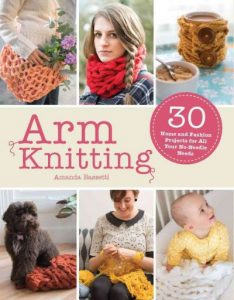 In that spirit, I have decided to spend the rest of this post encouraging you to discover how hyggeligt it can be to discover your DIY side. Those who know me might find it amusing that I am extolling you to get crafty, since that is not known to be one of my strengths. But there is something undeniably cozy about certain crafty past times. As a native Dane, Wiking agrees with me: “knitting is extremely hygge. It is a sign of ‘everything is safe’- it has a certain grandma vibe to it- and even the sound of knitting is hygge. Knitting also brings calmness to the situation and atmosphere.” If you, like many of us, could use a little extra calm, perhaps knitting will be your preferred way to experience hygge this winter. Thanks to the passion of one of our former staff members, the West Branch has a rather good collection of books on both knitting and crocheting. If you’re new to knitting, it has always seemed to me that a good place to start would be with Arm Knitting. A recent book about this topic has been written by Amanda Bassetti.
In that spirit, I have decided to spend the rest of this post encouraging you to discover how hyggeligt it can be to discover your DIY side. Those who know me might find it amusing that I am extolling you to get crafty, since that is not known to be one of my strengths. But there is something undeniably cozy about certain crafty past times. As a native Dane, Wiking agrees with me: “knitting is extremely hygge. It is a sign of ‘everything is safe’- it has a certain grandma vibe to it- and even the sound of knitting is hygge. Knitting also brings calmness to the situation and atmosphere.” If you, like many of us, could use a little extra calm, perhaps knitting will be your preferred way to experience hygge this winter. Thanks to the passion of one of our former staff members, the West Branch has a rather good collection of books on both knitting and crocheting. If you’re new to knitting, it has always seemed to me that a good place to start would be with Arm Knitting. A recent book about this topic has been written by Amanda Bassetti.
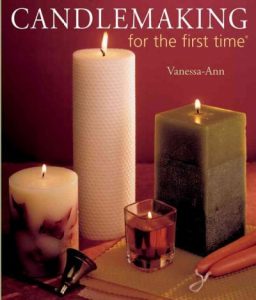 If knitting doesn’t warm your heart, you might try candlemaking. In fact, surveys show that candles are one of the items that Danes most associate with hygge. And according to Wiking, Danes consume more candles per capita than any other country on earth. So candlemaking must get very high hygge points. Candlemaking for the First Time by Vanessa-Ann seems like a great place to get you started.
If knitting doesn’t warm your heart, you might try candlemaking. In fact, surveys show that candles are one of the items that Danes most associate with hygge. And according to Wiking, Danes consume more candles per capita than any other country on earth. So candlemaking must get very high hygge points. Candlemaking for the First Time by Vanessa-Ann seems like a great place to get you started.
If I were to pick a hyggeligt crafty hobby, it would be quilting. I have long harbored a desire to learn to quilt. I have made one quilt in the Introduction to Quilting class that it regularly offered in the Creativity Lab. If you are a novice quilter, I highly recommend this class. The last session of the current class is tonight, but if you keep an eye on the Creativity Lab calendar, I’m sure it will be offered again soon. In the meantime, you could check out Quilting for the Absolute Beginner by Cheryl Owen, which can get you started on some simple quilting
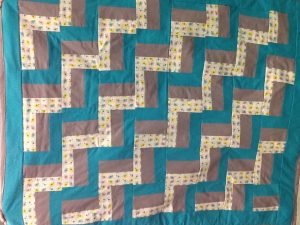
I’ll freely admit that my attraction to quilting probably largely stems from a number of fictional portrayals of quilters and quilting that I have enjoyed. In my humble opinion, these novels would be a great way to add even more hygge to your life, so I offer them as the final book suggestions from the West Branch this week:
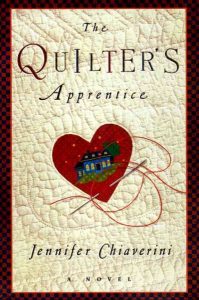 Elm Creek quilts series by Jennifer Chiaverini. The ladies of Elm
Elm Creek quilts series by Jennifer Chiaverini. The ladies of Elm
Creek seem to know a thing or two about hygge. Not only do they make lovely, warm quilts perfect for snuggling into while you read, drink hot beverages and bask in candlelight, but they create their beautiful blankets together, which is a very Danish thing to do. The audio book version of these novels win my personal stamp of approval, which would allow you lovers of books and crafts to enjoy both your hobbies at once.
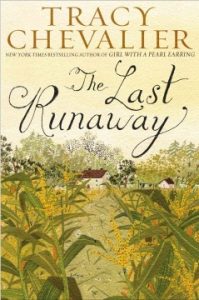
The Last Runaway by Tracy Chevalier is engaging historical fiction that features a quilter with a social conscience. Honor is a Quaker and a new arrival to America. She is a talented quilter, who finds herself repeatedly drawn into the work of those smuggling slaves to freedom, despite the dangers and reservations of her new family members. Similarly, The Invention of Wings by Sue Monk Kidd, draws in themes of quilting and slavery. Quilting does not play a central role in Kidd’s fictionalization of the life of one of the Grimke sisters, a Southern plantation daughter turned abolitionist. But the story quilt created by one of other main characters, a slave on the Grimke plantation, is one of the images of the book that has stuck with me ever since I read it. And again, I can highly recommend the audio book versions of both The Last Runaway and The Invention of Wings.
Whether you choose to try to find a sense of coziness and contentment in the coming weeks through making crafts or just reading about those who do, I will leave you now with the common Danish farewell, “Have hygge!”

